What a super e-road bike like the Trek Domane+ can do for you
Pedal assist can support your rides in surprising ways
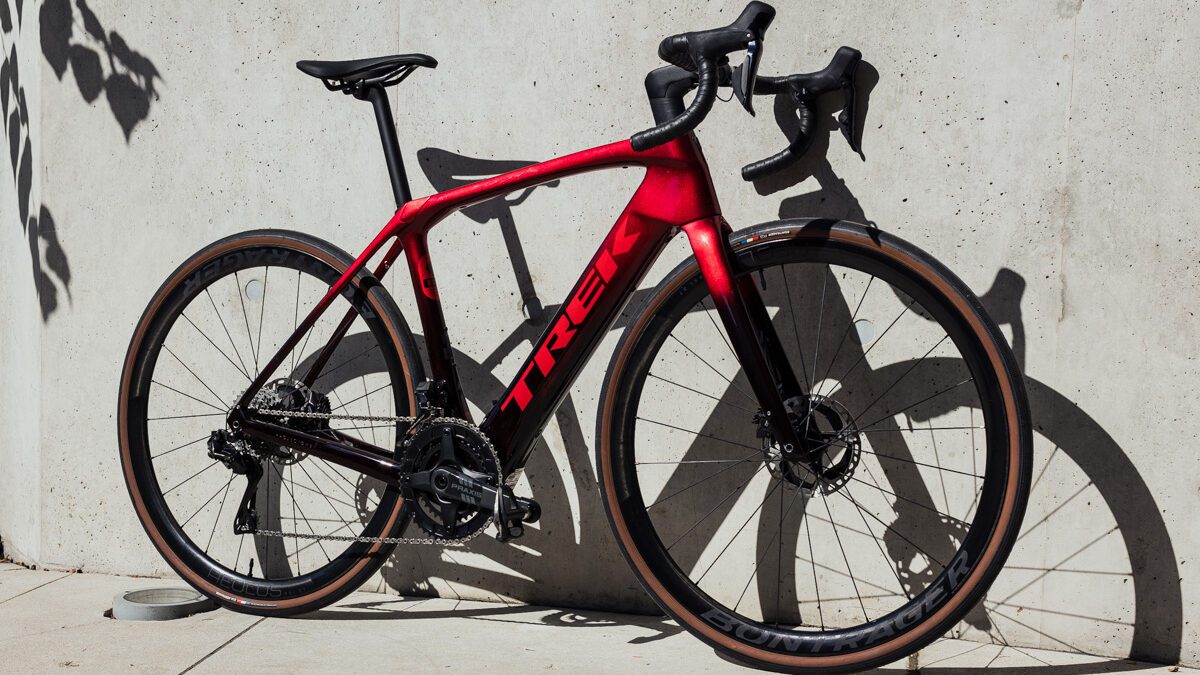 Photo by:
Matt Stetson
Photo by:
Matt Stetson
Before the group ride, my colleague and I hadn’t told the others what bike I was bringing. They only knew there’d be some “science.” I was conducting an experiment with the Trek Domane+ SLR 9, a top-end ebike with prime components. I wanted to see just what this super ebike could do for me on a group ride in which most of the cyclists were faster than me.
Technical details of the Trek Domane+ SLR 9
The Trek Domane+ SLR 9 debuted in October 2022. The frame is made with Trek’s top-end carbon-fibre formula, 800 Series OCLV. It’s equipped with Shimano Dura-Ace Di2 derailleurs, levers, cassette (11-34 tooth) and chain. The crankset with its 50/34-tooth chainrings and carbon cranks is by Praxis. The Bontrager Aeolus RSL 37 wheels are crazy light and fast.
Like the analog Domane, the Domane+ has Trek’s IsoSpeed technology in the seat post. It’s the fourth generation of the company’s vibration-dampening system. Previous versions of IsoSpeed were adjustable. The company found, however, that most riders would simply set their IsoSpeeds, and then never touch them again. To lower the bike’s weight, and reduce complexity and maintenance, designers created an IsoSpeed that isn’t adjustable and set at a level of compliance comparable to the previous generation’s most comfortable setting. Also adding some squish to the Domane+ are the 32c Bontrager R3 Hard-Case Lite tires. There’s clearance in the frame and fork for 40 mm treads, which is about 2 mm more than the non-e-Domane, making the pedal-assist bike quite capable for light gravel duty.
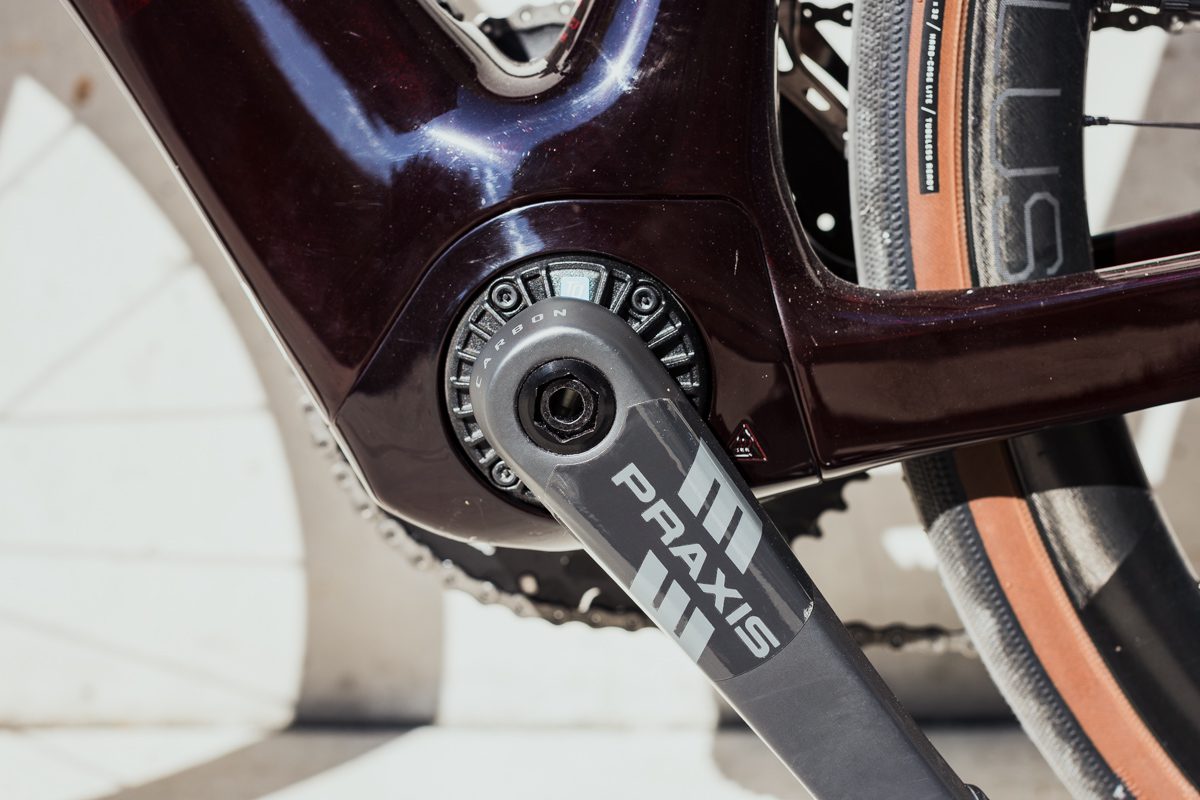
The Trek Domane+ SLR 9, with its Bontrager Pro IsoCore handlebar and Trek RCS Pro stem working to hide the brake hoses, tipped my scale to 11.8 kg. Now, before you remind me that most road bikes like this Domane are much closer to the UCI weight minimum of 6.8 kg, remember, this is an ebike. (The analog Domane SLR 9, which is comparable to my Domane+ SLR 9, weighs 7.25 kg in size 56.) So, 11.8 kg is pretty light.

The TQ-HPR50 drive unit
The TQ-HPR50 drive unit and battery first appeared on Trek’s Fuel EXe a few months before it showed up on the Domane+. I was intrigued by the new system, which is the same for both the mountain and road bike, except for the software. TQ, a company based in Southern Germany, tweaked the software so that the drive unit’s behaviour would be optimized for the Domane’s road rides. For a mountain bike, the 50 Nm of torque provided by the HPR50 make it a mid-power motor compared with the 85 Nm of the Shimano Steps EP8 or the Bosch Performance Line CX. On a road bike, 50 Nm is a little more oomph than I’m used to. Throughout the past five years, many of the e-road and e-gravel bikes I’ve tested have been equipped with systems similar to the Hyena unit, like the one on a lower-tier Domane+ AL 5, which has a maximum of 40 Nm. What I also like about the HPR50 is that it’s a mid-drive motor, not hub-drive like the Hyena. When a motor is at the bottom bracket, the bike is better balanced. Also, tire repairs are easier when there’s no motor wired into the hub. The TQ drive unit weighs 1,850 g. The whole ebike system is 3,900 g.
Integrated into the Domane+’s top tube is a display unit. It shows you the 360-Wh battery’s charge level and the assist mode. You can also cycle through screens with other information including the remaining percentage and time of support by the battery, a range estimate, your power output and that of the drive unit, your speed or your cadence. There are three levels of assist that you can customize. With the Trek Central app, you can adjust the amount of assistance you get in each mode and its responsiveness, which ranges from gradual to quick. You can easily ride 100 km with help from the system. Actually, the battery could add power for even more kilometres; it depends on how much assist you use and how hilly the terrain is. You can also put a 160-Wh range extender on the seat tube for added juice.

On the topic of batteries: you’ve no doubt seen videos or read about dodgy ebike batteries burning up. All systems that Trek uses are certified by UL Solutions, a third-party that checks the safety of batteries. So, everything is on the up and up.
How the Trek Domane+ SLR 9 rides
I’ve ridden almost all generations of the Domane. With each one, Trek does a fine job of balancing comfort with performance. Where the company’s aero and climber’s bikes (Madone and Émonda) have Trek’s H1.5 fit—geometry meant to put pros in fast, more aerodynamic positions—the Domane has an endurance setup. You sit a little more upright on this bike. The Domane ain’t no cruiser, however. It’s still a speedy, responsive machine that’s won Paris-Roubaix twice (Elizabeth Deignan in 2021 and Elisa Longo Borghini in 2022).
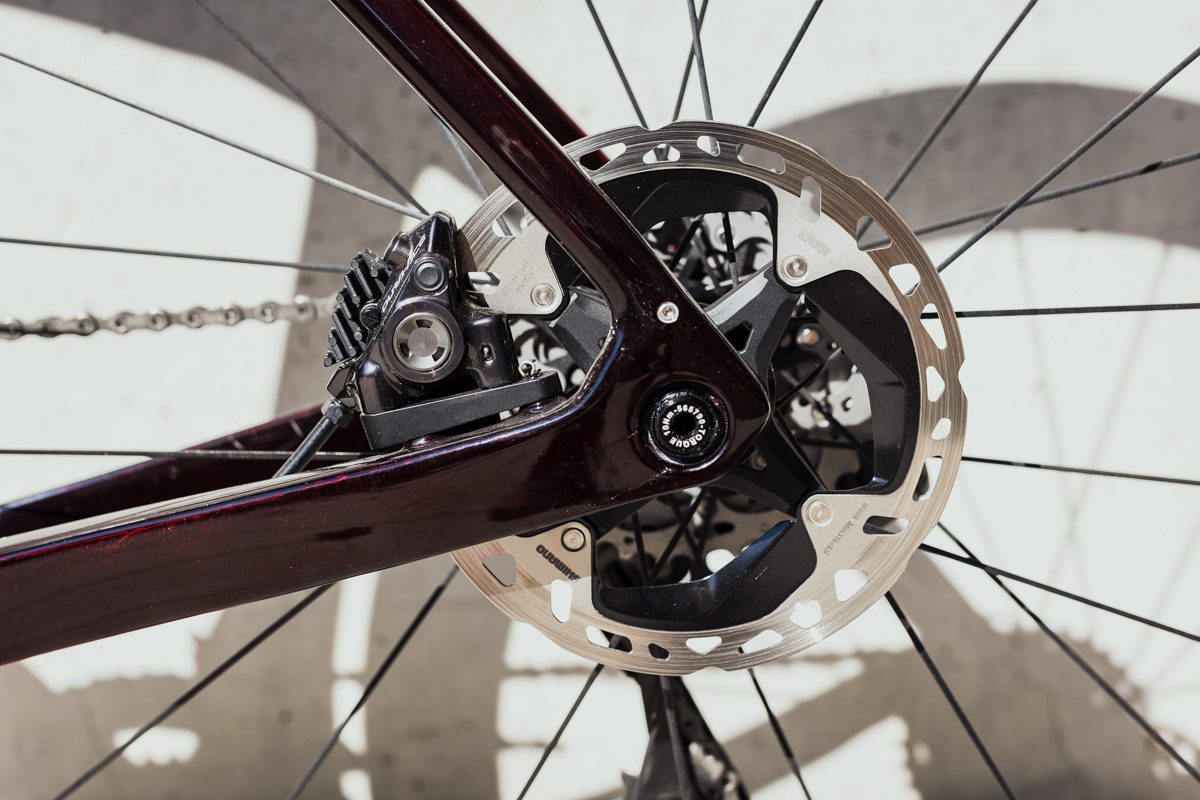
Before I tell you more about the drive unit, let me tell you about not-so-great drive units I’ve used. As you pedal a not-so-great system, it does a fine job as the two of you work to get to the maximum assist speed. Remember, in Canada, an ebike like the Domane+ will only help you to 32 km/h. After that, you’re on your own to go faster (or you’re looking for a downhill stretch or a tailwind). Once you get to 32 km/h with a not-so-great e-assist, the unit kind of dumps you. It cuts out and you almost feel like an anchor has dropped. That’s not the case with the TQ motor. It’s a much more refined system that does a good job of supporting you as you hover around 32 km/h.

The first experiment with the Trek Domane+ SLR 9: Hills
My first test with the Domane+ wasn’t with the fast group ride, but with my colleague. Web editor Matt Hansen is fast. I’ve seen his FTP. In fact, he shares it freely with me, and it is much higher than my own. Still, we ride together, and it’s generally pleasant. Mostly.
For this test, I rode for about an hour, sans assist, and met up with Matt. Soon, we were at a climb, about 1.4-km long with an average grade of 3.5 per cent. There are parts at around 10 per cent. I kept the motor off. Matt, ever the gentleman, didn’t drop me. He stayed near, and chatted a bit, as I gasped for air. He had watts to spare.
The next climb we faced had a similar makeup. This time, however, I looked to the Domane+ for a little help. And I mean that. I used the lowest assist setting. I didn’t delve into the motor’s 300 W of maximum assistance.
Matt got a gap on me at the bottom of the climb. He held it. And held it. Held it for longer than I liked. I had to pedal hard, harder than I expected. In the final 500 m I had him gapped. Victory(-ish). But, man, was it tough.
Some ebike myth-busting or ‘No, I wasn’t going 32 km/h on that climb’
Yes, an ebike will help you up to 32 km/h, however, it is not going to boost you up to that speed in all conditions. Remember, the pedal-assist unit is only adding a certain percentage of power to your wattage. So, when you factor in rider weight, gradient, rider power and drive-unit power available, 32 km/h might just not be possible.

Still, even if you’re not going at the maximum assisted speed, the help on inclines is really the strong suit of an ebike such as the Trek Domane+ SLR 9 because gravity, well, it’s always weighing you down, isn’t it? Not to mention, your riding partners—if they are like mine—aren’t going 32 km/h up that incline either.
Where the ebike can help you the most
As I mentioned, climbs really are the places where the added power of the pedal assist really shines. But a battery and a motor aren’t there just to help you drop your friends. No, the ebike is a versatile machine that performs well in a variety of scenarios.
This past summer, I got sick. It sucked. During prime riding season, I was knocked out, and then had to build up my fitness. It was nice to have the Domane+ around as I was getting better. If I was riding my analog bike early in my recovery, I wouldn’t have been covering much distance. That’s fine, but it’s much more interesting, and fun, to cover a good number of kilometres once you’ve gotten all kitted up. The Domane+ let me cover more clicks on a ride than my post illness legs were actually capable of. The distance was good for my morale.
Even if you’re not knocked out by a cold, you no doubt face fluctuations in energy and power as you train. After a hard workout or block of training, you need to take it easy to recover properly. For some, the required restraint of a focused Zone 2 can be a bit crazy making. (“But I want to get somewhere!”) The added zip from the drive unit can mean you keep your efforts low, as you should, but still enjoy a good time out.
The second experiment with the Trek Domane+ SLR 9: The fast, flat ride
Back to the group ride I introduced earlier. As we gathered, I told the others about the bike. After all, I wasn’t there to deceive. “Really, that’s an ebike?” “Yeah. Look. You can see the drive unit here.” The TQ setup is definitely subtle.
The first part of the ride was just fine. We rode west. I took turns at the front, which weren’t a total breeze because we were moving faster than 32 km/h, but they weren’t too difficult. Sitting in the group took barely any effort. Then we made a right, and it was on.
As we started the 5-km stretch where everyone goes all-out, many riders came around me. Most were going faster than 40 km/h, which was just hard for me to maintain. I fought for a few wheels, hanging on for a bit, but then slipping. After the jam session, we regrouped and rode back east. There was a coffee stop, and most of the riders went their own ways. But one rider and I duked it out on a hill. He was one from the bunch who had dropped me earlier, but I got him on the hill. Thank you ebike, I think.
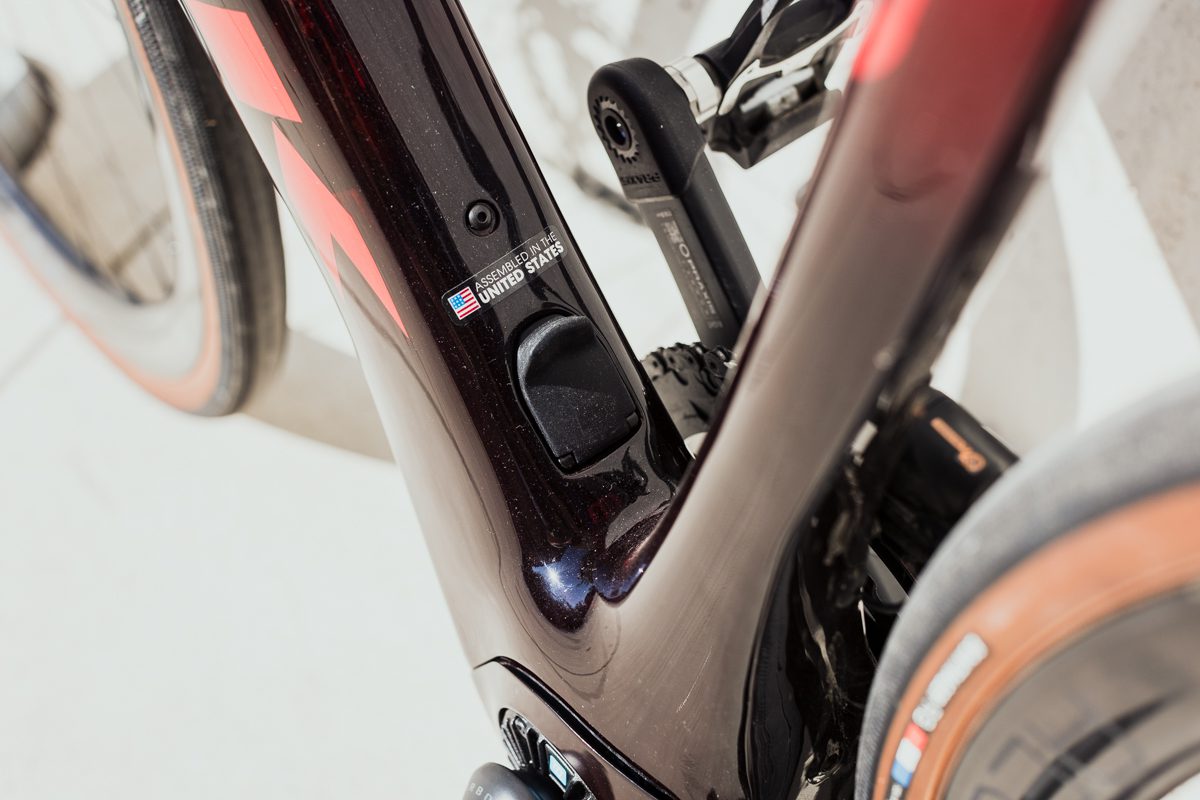
So, what did my experiment tell me? Well, a super e-road bike is not going to move you up a category. Maybe the U.S. model of the Domane+ with its 45 km/h top-assist speed could have kept me closer to the front group. But this experiment and the analysis doesn’t end there.
There was a Part II, with another Trek bike. A non-e super bike. The Madone SLR 9 with full Dura-Ace. It weighed close to 4 kg less than the Domane+. Could the light aero bike be just the thing for cruising faster than 32 km/h on flat roads?
Now, a few caveats. The route I did with the Madone was the same as the one I did with the Domane+, but there were fewer people in the group that second morning. I think that plays a role when we look at the data.
So, did I “win” on the Madone? Nope. On the fast, flat section I finished toward the back of the small pack. But let’s look at some numbers I’ve taken from Xert, the training software that I use, from the ride-full-out section of the group ride.
| Bike | Average speed | Maxiumum Speed | Difficulty at the start of the jam session | Difficulty at the end of the jam session |
|---|---|---|---|---|
| Trek Domane+ SLR 9 | 37.1 km | 47.9 km | 82 | 153 |
| Trek Madone SLR 9 | 34.8 km | 48.4 km | 121 | 163 |
Before I took a look at these figures, I had thought that my Madone ride was faster. I hit a higher maximum speed on the aero bike, but I maintained a higher average speed on the Domane+. How could that be? Above 32 km/h, the ebike wasn’t providing any assist and it was heavier than the Madone. It seems I was simply working harder when I raced the Domane+.
Check out the difficulty numbers. In Xert, the difficulty score is “a measure of how much strain has accumulated over the course of an activity or workout.” On the Domane+, throughout the course of the race-y section, the difficulty went up by 71. During the Madone ride, it rose by 42. You’ll also notice that on the Madone ride, I had worked harder by the time the group had travelled the 24 km to the “race start.”
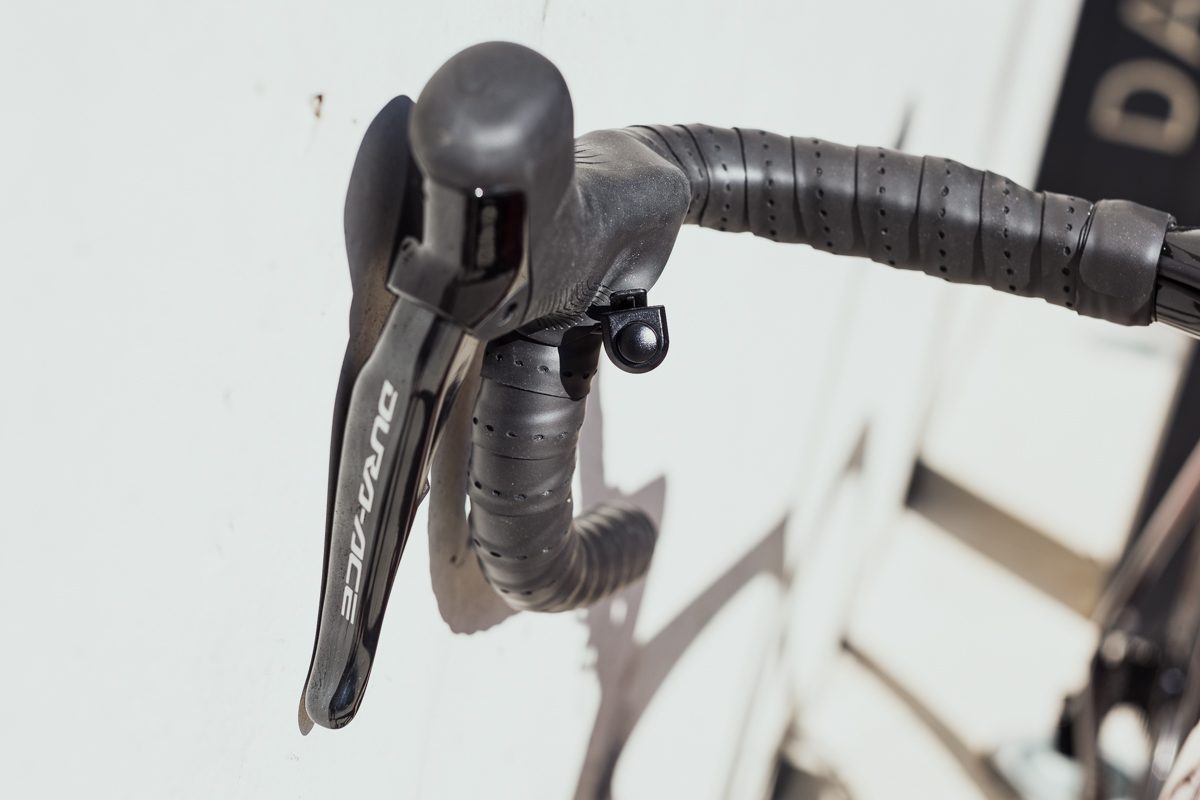
My analysis: on the Domane+ ride, the pedal assist helped me to save some energy, those proverbial matches we speak about, before the hard riding began. Also, the bigger group let me spend more time drafting. When it was go-time, the greater number of riders on the road helped me push myself harder: there was often a wheel to chase (and then lose) throughout the 5 km.
On the Madone ride with its smaller group, I had done more work—burned more matches, if you will—by the time we got to the race loop. Once everyone was off, it was more of a time-trial effort—unlike the more breakaway-like one from the Domane+ ride—as there was just no catching anyone.
As for the hill that provided me with a small win after getting dropped with the Domane+, I also did very well there with the Madone. But I can’t make much out of those two events as the hill-climb litmus test is my colleague Matt, who couldn’t make those rides.
After the experiments with the Trek Domane+ SLR 9, the conclusions
The Trek Domane+ SLR 9 couldn’t make me a cycling star, but I knew that from the start. On the flats and in groups with riders who can hold more than 40 km/h, both the bike and I were out gunned. However, even in those situations, the bike helped me to ride at my best and possibly a little better than my “unassisted best” as it saved my legs in the leadup to the race loop.
It’s on the hills where the Domane+ really makes a difference. It will let you hang with or even pass faster riders. So much still depends on your fitness and that of your fellow riders. Whatever the composition of the group, it’s always great to get a little help.
This article is supported by Trek. Find out more about the Trek Domane+ SLR 9 ($17,000) at trekbikes.com.

